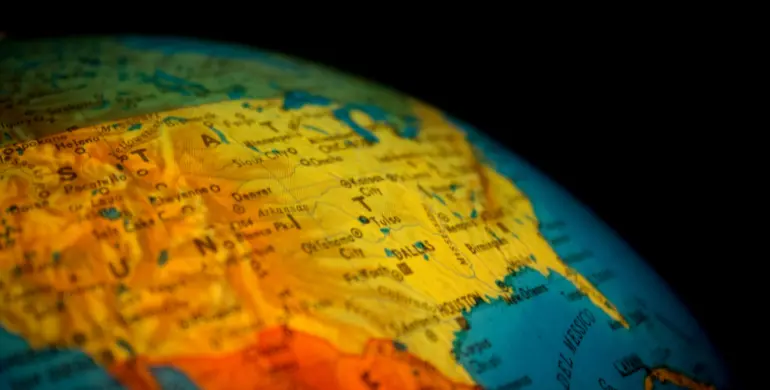When you’re hoping to gain meaningful insights into your company from the collected data, look no further than color coded maps. A color coded map assigns different colors to predetermined values, offering an equally powerful and stunning data visualization tool. These maps can help virtually every department within a business to understand large amounts of data in a simple and easy-to-understand format.
Turn any dataset into a powerful color coded map with third-party mapping software. Many programs integrate user-friendly functionality to help you visualize the location data into a digestible map.
What is a Color Coded Map?
Color-coding maps can help visualize any variations in your data by assigning different colors to values within your column data. The mapping software will display the data according to the map’s color. Individuals can often color-code the map in several ways, from predefined territories to individual pins. Users can even develop customized geographic boundaries.
The color coded maps can be complex or straightforward, depending on your requirements. For instance, users can color differing US states blue or red based on election results for a traditional map. Alternatively, users can assign shades of the same colors to show a margin of victor within different zoom levels. Many types of mapping software will offer entire swatches of custom colors for any combination of colors required.
What is the Purpose of a Color Coded Map?
Most color coded maps are referred to as thematic maps. Various organizations use these maps to extract insights, identify trends, or simplify large volumes of data. It’s important to note that color coding typically works best for distinct variations in data.
Understanding the Difference Between Color Coded Maps and Heat Maps
Although both maps use different types of color to express varying ranges of values in your data, they serve other purposes overall. A heat map will measure density over a specific geographic area. The darker the color on the map, the higher the density overall. Like isopleth maps, a heat map is fabulous for contrasting and comparing density distribution within a specific area. A heat map isn’t defined by set boundaries within a map. Additionally, a heat map isn’t as absolute as color coded maps. A heat map is a better fit for more qualitative analysis.
A color coded map is better for distinct and straightforward analysis. Many color coded maps don’t require an analysis to understand. For example, assigning a different color to all 50 US states will create a color coded map (as each state is a different interval on the map).
What are the Benefits of Color Coded Maps?
A color coded map can answer any problem that calls for a relationship between geography and a data’s value. The direct benefit of a color coded map is expansive. Here are a few examples:
Political Organizers, Analysts, and Strategists
Learn about party lines, track voter turnout, and determine election results. A color coded map will allow users to forecast various outcomes, present different findings, and plan different strategies. Media outlets often use the color coded map during election coverage.
Sales and Marketing Teams
Use the color coded map to track regional sales volumes, target new markets, and define territories. Sales and marketing teams can map layers for market characteristics like demographics, population density, and spending habits over your business data.
Related b2b marketing trends
Public Health Agencies, Policy, and Government
Determine specific demographics, conduct studies, and analyze variables influenced by specific geographic regions. All color coded maps have been powerful resources for cataloging active cases by zip code within a particular population.
Students, Teachers, and Academics
Understand the patterns, insights, and relationships hidden within your spreadsheet data. The color coded map benefits anyone studying geography, ecology, business administration, and sociology.
Can You Color Code a Google Map?
Unfortunately, Google Maps doesn’t allow users to color code a map. Thankfully, GIS software often incorporates Google Maps into the functionality, allowing extensive reliability (99.99% uptime), global coverage, cloud-based servers, and more accurate real-time maps across the globe. Look for third-party mapping software that integrates Google Maps functionality whenever possible.
Start with a Color Coded Map Today
Whether you’re looking to visualize extensive amounts of data or want robust analysis and insights into your company, a color coded map can quickly become your organization’s most comprehensive and convenient asset if used efficiently.
Related find who your neighbors are



